Assessing the Ameliorative Effect of Selenium Cinnamomum verum, Origanum majorana, and Origanum vulgare Nanoparticles in Diabetic Zebrafish (Danio rerio)
Abstract
:1. Introduction
2. Results and Discussion
2.1. Phytochemicals
2.2. Synthesis GA-COO-SeNPs
2.3. Particle Size, Zeta Potential, and PDI Determination
2.4. Morphology Characterization by Transmission Electron Microscopy (TEM)
2.5. UV–Visible Spectra
2.6. Fourier Transform Infrared Spectroscopy (FTIR)
2.7. Storage Stability of GA-COO-SeNPs
2.8. Release of COO from Nanoparticles at Different pH Levels
2.9. Elemental Analysis of COO Extract and GA-COO-SeNPs
2.10. Effects of GA-COO-SeNPs on the Survival Rate of Zebrafish
2.11. Biological Activity of GA-COO-SeNPs in Zebrafish
2.12. Effects of GA-COO-SeNPs in Antioxidant Enzymes of the Liver in Zebrafish
3. Materials and Methods
3.1. Generals
3.2. Plant Materials
3.3. Ultrasound-Assisted Extraction (UAE) of Polyphenolic Compounds (COO)
3.4. Total Polyphenolic Content
3.5. Identification of Phytochemicals
3.6. Synthesis of Selenium-Nanoparticle-Embedded Gum Arabic Microspheres
3.7. Characterization of GA-COO-SeNPs
3.8. Encapsulation Efficiency (EE%)
3.9. COO Release In Vitro
3.10. Maintenance of Zebrafish (Danio rerio)
3.11. The Survival Rate of Zebrafish
3.12. Assessment of the Antidiabetic Effect of Nanoparticles
3.13. Biochemical Analysis
3.14. Statistical Analysis
4. Conclusions
Author Contributions
Funding
Institutional Review Board Statement
Informed Consent Statement
Data Availability Statement
Conflicts of Interest
References
- Teixeira, C.C.; Rava, C.A.; Da-Silva, P.M.; Melchior, R.; Argenta, R.; Anselmi, F.; Almeida, R.; Fuchs, F.D. Absence of antihyperglycemic effect of jambolan in experimental and clinical models. J. Ethnopharmacol. 2000, 7, 343–347. [Google Scholar] [CrossRef]
- Huang, G.J.; Hsieh, W.T.; Chang, H.Y.; Huang, S.S.; Kuo, Y.H. Inhibitory constituents of α-and aldose reductase in the fruiting body of Phellinus merrillii. J. Agric. Food Chem. 2011, 59, 5702–5706. [Google Scholar] [CrossRef] [PubMed]
- Wang, L.; Li, C.; Huang, Q.; Fu, X. Polysaccharide from Rosa roxburghii Tratt fruit attenuates hyperglycemia and hyperlipidemia and regulates colon microbiota in diabetic db/db mice. J. Agric. Food Chem. 2020, 68, 147–159. [Google Scholar] [CrossRef] [PubMed]
- Shanmugam, K.R.; Shanmugam, B.; Subbaiah, G.V.; Ravi, S.; Reddy, K.S. Medicinal Plants and Bioactive Compounds for Diabetes Management: Important Advances in Drug Discovery. Curr. Pharm. Des. 2021, 27, 763–774. [Google Scholar] [CrossRef] [PubMed]
- Kumar, S.; Mittal, A.; Babu, D.; Mittal, A. Herbal Medicines for Diabetes Management and its Secondary Complications. Curr. Diabetes Rev. 2021, 17, 437–456. [Google Scholar] [CrossRef] [PubMed]
- Aumeeruddy, M.Z.; Mahomoodally, M.F. Ethnomedicinal Plants for the Management of Diabetes Worldwide: A Systematic Review. Curr. Med. Chem. 2021, 28, 4670–4693. [Google Scholar] [CrossRef]
- Etxeberria, U.; De La Garza, A.L.; Campion, J.; Martínez, J.A.; Milagro, F.I. Antidiabetic of natural plant extracts via inhibition of carbohydrate hydrolysis enzymes with emphasis on pancreatic alpha amylase. Expert. Opin. Ther. Tar. 2012, 16, 269–297. [Google Scholar] [CrossRef] [PubMed] [Green Version]
- Elchiguerra, J.L.; Burt, J.L.; Morones, J.R. Interaction of silver nanoparticles with HIV-1. J. Nanobiotechnol. 2005, 3, 1477–3155. [Google Scholar] [CrossRef] [PubMed] [Green Version]
- Mirza, A.Z.; Siddiqui, F.A. Nanomedicine and drug delivery: A mini review. Int. Nano Lett. 2014, 4, 94–100. [Google Scholar] [CrossRef] [Green Version]
- Khurana, A.; Tekula, S.; Saifi, M.A. Therapeutic applications of selenium nanoparticles. Biomed. Pharm. 2019, 111, 802–812. [Google Scholar] [CrossRef] [PubMed]
- Dong, C.Y. Effects of biological metabolism of Metasequoia glyptostroboides on nutrient element content and enzyme activity in seedling soil. Turk. J. Agric. For. 2021, 45, 642–650. [Google Scholar] [CrossRef]
- Wang, H.; Zhang, J.; Yu, H.; Khurana, A.; Tekula, S.; Saifi, M.A.; Venkatesh, P.; Godugu, C. Elemental at nano size possesses lower toxicity without compromising the fundamental: Effect on selenoenzymes: Comparison with selenomethionine in mice. Free Radic. Biol. 2007, 42, 1524–1533. [Google Scholar] [CrossRef] [PubMed]
- Ingole, A.R.; Thakare, S.R.; Khati, N.T.; Wankhade, A.V.; Burghate, D.K. Green synthesis of selenium nanoparticles under ambient conditions. Chalcogenide Lett. 2010, 7, 485–489. [Google Scholar]
- Ranasinghe, P.; Jayawardana, R.; Galappaththy, P.; Constantine, G.R.; Gunawardana, N.V.; Katulanda, P. Efficacy and safety of “true” cinnamon (Cinnamomum zeylanicum) as a pharmaceutical agent in diabetes: A systematic review and meta-analysis. Diabet. Med. 2012, 29, 1480–1492. [Google Scholar] [CrossRef] [PubMed]
- Solimana, M.M.; Hassan, M.A.; Ismail, T.A. Origanum Majoranum extract modulates gene expression, hepatic and renal changes in a rat model of type 2 diabetes. Iran. J. Pharm. Res. 2016, 15, 45–54. [Google Scholar]
- Yu, H.; Zhang, P.; Liu, H.; Sun, X.; Liang, J.; Sun, L.; Chen, Y. Hypoglycemic activity of Origanum vulgare L. and its main chemical constituents identified with HPLC-ESI-QTOF-MS. Food Funct. 2021, 12, 2580–2590. [Google Scholar] [CrossRef] [PubMed]
- Ji, Z.; Ma, Z.; Fu, Q.; Ma, S. Ferulic acid attenuates diabetes -induced cognitive impairment rats via regulation of PTP1B and insulin signaling pathway. Physiol. Behavior. 2017, 182, 93–100. [Google Scholar] [CrossRef]
- Adisakwattana, S. Cinnamic acid and its derivatives: Mechanisms for prevention and management of diabetes and its complications. Nutrients 2017, 9, 163. [Google Scholar] [CrossRef] [Green Version]
- Abdel-Moneim, A.; El-Twab, S.M.A.; Yousef, A.I.; Reheim, E.S.A.; Ashour, M.B. Modulation of hyperglycemia and dyslipidemia in experimental type 2 diabetes by gallic acid and p-coumaric acid: The role of adipocytokines and PPARgamma. Biomed. Pharmacother. 2018, 105, 1091–1097. [Google Scholar] [CrossRef]
- Yongwang, Y.; Zhou, X.; Guo, K.; Zhou, F.; Yang, H. Use of chlorogenic acid against diabetes mellitus and its complications. J. Immunol. Res. 2020, 2020, 6. [Google Scholar] [CrossRef]
- Muthukumaran, J.; Srinivasan, S.; Venkatesan, R.S. Syringic acid, a novel natural phenolic acid, normalizes hyperglycemia with special reference to glycoprotein components in experimental diabetic rats. J. Acute Dis. 2013, 2, 304–309. [Google Scholar] [CrossRef] [Green Version]
- Chang, W.C.; Wu, J.; Chen, C.W.; Kuo, P.L.; Chien, H.M.; Wang, Y.T.; Shen, S.C. Protective effect of vanillic acid against hyperinsulinemia, hyperglycemia, and hyperlipidemia via alleviating hepatic insulin resistance and inflammation in high-fat diet (HFD)-Fed Rats. Nutrients 2015, 7, 9946–9959. [Google Scholar] [CrossRef] [PubMed] [Green Version]
- Kakkar, S.; Bais, S. A review on protocatechuic acid and its pharmacological potential. ISRN Pharmacol. 2014, 2014, 1–9. [Google Scholar] [CrossRef] [PubMed] [Green Version]
- Singh, A.K.; Patel, P.K.; Choudhary, K. Quercetin and coumarin inhibit dipeptidyl peptidase-IV and exhibits antioxidant properties: In silico, In vitro, ex vivo. Biomolecules 2020, 10, 207. [Google Scholar] [CrossRef] [PubMed] [Green Version]
- Oršolić, N.; Sirovina, D.; Odeh, D.; Gajski, G.; Balta, V.; Šver, L.; Jazvinšća, K.; Jembrek, M. Efficacy of caffeic acid on diabetes and its complications in the mouse. Molecules 2021, 26, 3262. [Google Scholar] [CrossRef] [PubMed]
- Ngo, Y.L.; Lau, C.H.; Chua, L.S. Review on rosmarinic acid extraction, fractionation and its anti-diabetic potential. Food Chem. Toxicol. 2018, 121, 687–700. [Google Scholar] [CrossRef] [PubMed]
- Al-Trad, B.; Alkhateeb, H.; Alsmadi, W.; Al-Zoubi, M. Eugenol ameliorates insulin resistance, oxidative stress and inflammation in high fat-diet/streptozotocin-induced diabetic rat. Life Sci. 2019, 216, 183–188. [Google Scholar] [CrossRef]
- Zhu, R.; Liu, H.; Liu, C.; Wang, L.; Ma, R.; Chen, B.; Gao, S. Cinnamaldehyde in diabetes: A review of pharmacology. Pharmacol. Res. 2017, 122, 78–89. [Google Scholar] [CrossRef] [PubMed]
- Zheng, L.; Lee, J.; Yue, L.M. Inhibitory effect of pyrogallol on α-glucosidase: Integrating docking simulations with inhibition kinetics. Intern. J. Biol. Macromol. 2018, 112, 686–693. [Google Scholar] [CrossRef]
- Xie, Z.; Zhong, L.; Wu, Y.; Wan, X.; Yang, H.; Xu, X.; Li, P. Carnosic acid improves diabetic nephropathy by activating Nrf2/ARE and inhibition of NF-κB pathway. Phytomedicine 2018, 47, 161–173. [Google Scholar] [CrossRef]
- Mechchate, H.; Es-safi, I.; Mohamed Al kamaly, O.; Bousta, D. Insight into Gentisic Acid Antidiabetic Potential Using In Vitro and In Silico Approaches. Molecules 2021, 6, 932. [Google Scholar] [CrossRef] [PubMed]
- Ma, X.M.; Zhang, J.; Wu, Z. Chicoric acid attenuates hyperglycemia-induced endothelial dysfunction through AMPK-dependent inhibition of oxidative/nitrative stresses. Recept. Signal Transduct. Res. 2021, 41, 378–392. [Google Scholar] [CrossRef] [PubMed]
- Shi, Y.; Pan, D.; Yan, L.; Chenm, H.; Zhang, X.; Yuan, J.; Biao, M. Salvianolic acid B improved insulin resistance through suppression of hepatic ER stress in ob/ob mice. Biochem. Biophys. Res. Commun. 2020, 526, 733–737. [Google Scholar] [CrossRef] [PubMed]
- Mees, D.R.; Pysto, W.; Tarcha, P.J. Formation of selenium colloids using sodium ascorbate as the reducing agent. J. Colloid Interface Sci. 1995, 170, 254–260. [Google Scholar] [CrossRef]
- Mohanraj, V.J.M.; Chen, Y. Nanoparticles—A review. Trop. J. Pharm. Res. 2006, 5, 561. [Google Scholar] [CrossRef] [Green Version]
- Nandini, B.; Hariprasad, P.; Prakash, H.S.; Shetty, H.S.; Geetha, N. Trichogenic-selenium nanoparticles enhance disease suppressive ability of Trichoderma against downy mildew disease caused by Sclerospora graminicola in pearl millet. Sci. Rep. 2017, 7, 2612. [Google Scholar] [CrossRef]
- Chen, A.; Shin, D.; Nam, J.; Taylor, E.W. Selenium nanowires and nanotubes synthesized via a facile template-free solution method. Mater. Res. Bull. 2010, 45, 699–704. [Google Scholar] [CrossRef]
- Yang, L.B.; Shen, Y.J.; Xie, A.J.; Liang, J.J.; Zhang, B.C. Synthesis of Se nanoparticles by using TSA ion and its photocatalytic application for decolorization of cango red under UV irradiation. Mater. Res. Bull. 2008, 43, 572–582. [Google Scholar] [CrossRef]
- Sharma, G.; Sharma, A.R.; Bhavesh, R.; Park, J.; Ganbold, B.; Nam, J.S.; Lee, S.S. Biomolecule-mediated synthesis of selenium nanoparticles using dried Vitis vinifera (raisin) extract. Molecules 2014, 19, 2761–2770. [Google Scholar] [CrossRef]
- Abbas, H.S.; Baker, D.H.; Ahmed, E.A. Cytotoxicity and antimicrobial efficiency of selenium nanoparticles biosynthesized by Spirulina platensis. Arch. Microbiol. 2021, 203, 523–532. [Google Scholar] [CrossRef]
- Kora, A.J.; Sashidhar, R.B. Biogenic silver nanoparticles synthesized with rhamnogalacturonan gum: Antibacterial activity, cytotoxicity and its mode of action. Arab. J. Chem. 2018, 11, 313–323. [Google Scholar] [CrossRef] [Green Version]
- Kora, A.J.; Arunachalam, J. Green fabrication of silver nanoparticles by gum tragacanth (Astragalus gummifer): A dual functional reductant and stabilizer. J. Nanomater. 2012, 2012, 8–12. [Google Scholar] [CrossRef] [Green Version]
- Kora, A.J.; Beedu, S.R.; Jayaraman, A. Size-controlled green synthesis of silver nanoparticles mediated by gum ghatti (Anogeissus latifolia) and its biological activity. Org. Med. Chem. Lett. 2012, 2, 17–21. [Google Scholar] [CrossRef] [PubMed] [Green Version]
- Song, X.; Chen, Y.; Sun, H.; Liu, X.; Leng, X. Physicochemical stability and functional properties of selenium nanoparticles stabilized by chitosan, carrageenan, and gum Arabic. Carbohydr. Polym. 2020, 255, 117379. [Google Scholar] [CrossRef] [PubMed]
- Kora, A.J.; Sashidhar, R.B. Antibacterial activity of biogenic silver nanoparticles synthesized with gum ghatti and gum olibanum: A comparative study. J. Antibiot. 2015, 68, 88–97. [Google Scholar] [CrossRef] [PubMed]
- Kumar, A.; Kulkarni, A.; Khurana, J. Selenium nanoparticles involve HSP-70 and SIRT1 in preventing the progression of type 1 diabetic nephropathy. Chem. Biol. Interact. 2014, 223, 125–133. [Google Scholar] [CrossRef] [PubMed]
- Ni, H.; Peng, L.; Gao, X.; Ji, H.; Ma, J.; Li, Y.; Jiang, S. Effects of maduramicin on adult zebrafish (Danio rerio): Acute toxicity, tissue damage, and oxidative stress. Ecotoxicol. Environ. Saf. 2019, 168, 249–259. [Google Scholar] [CrossRef]
- Liu, Q.; Wang, S.; Cai, L. Diabetic cardiomyopathy and its mechanisms: Role of oxidative stress and damage. J. Diabetes Investig. 2014, 5, 623–634. [Google Scholar] [CrossRef]
- Pérez-Gutiérrez, R.M.; Martínez-Jerónimo, F.F.; Contreras-Soto, J.G.; Muñiz-Ramírez, A.; Mendoza, M.F.E. Optimization of ultrasonic-assisted extraction of polyphenols from the polyherbal formulation of Cinnamomum verum, Origanum majorana, and Origanum vulgare and their antidiabetic capacity in zebrafish (Danio rerio). Heliyon 2021, 8, 08682. [Google Scholar] [CrossRef]
- Kunjiappan, S.; Panneerselvam, T.; Somasundaram, B. Design, in silico modeling, biodistribution study of rutin and quercetin loaded stable human hair keratin nanoparticles intended for anticancer drug delivery. Biomed. Phys. Eng. Express. 2018, 4, 025019. [Google Scholar] [CrossRef]
- Manigandan, K.; Jayaraj, R.L.; Jagatheesh, K.; Elangovan, N. Taxifolin mitigates oxidative DNA damage in vitro and protects zebrafish (Danio rerio) embryos against cadmium toxicity. Environ. Toxicol. Pharmacol. 2015, 39, 1252–1261. [Google Scholar] [CrossRef] [PubMed]
- Capiotti, K.M.; Antonioli, R.; Kist, L.W. Persistent impaired glucose metabolism in a zebrafish hyperglycemia model. Comp. Biochem. Physiol. Part B Biochem. Mol. Biol. 2014, 171, 58–65. [Google Scholar] [CrossRef] [PubMed] [Green Version]
- Zhang, L.; Shimada, Y.; Nishimura, N. Development of a novel zebrafish model for type 2 diabetes mellitus. Sci. Rep. 2017, 7, 7735–7741. [Google Scholar] [CrossRef] [Green Version]
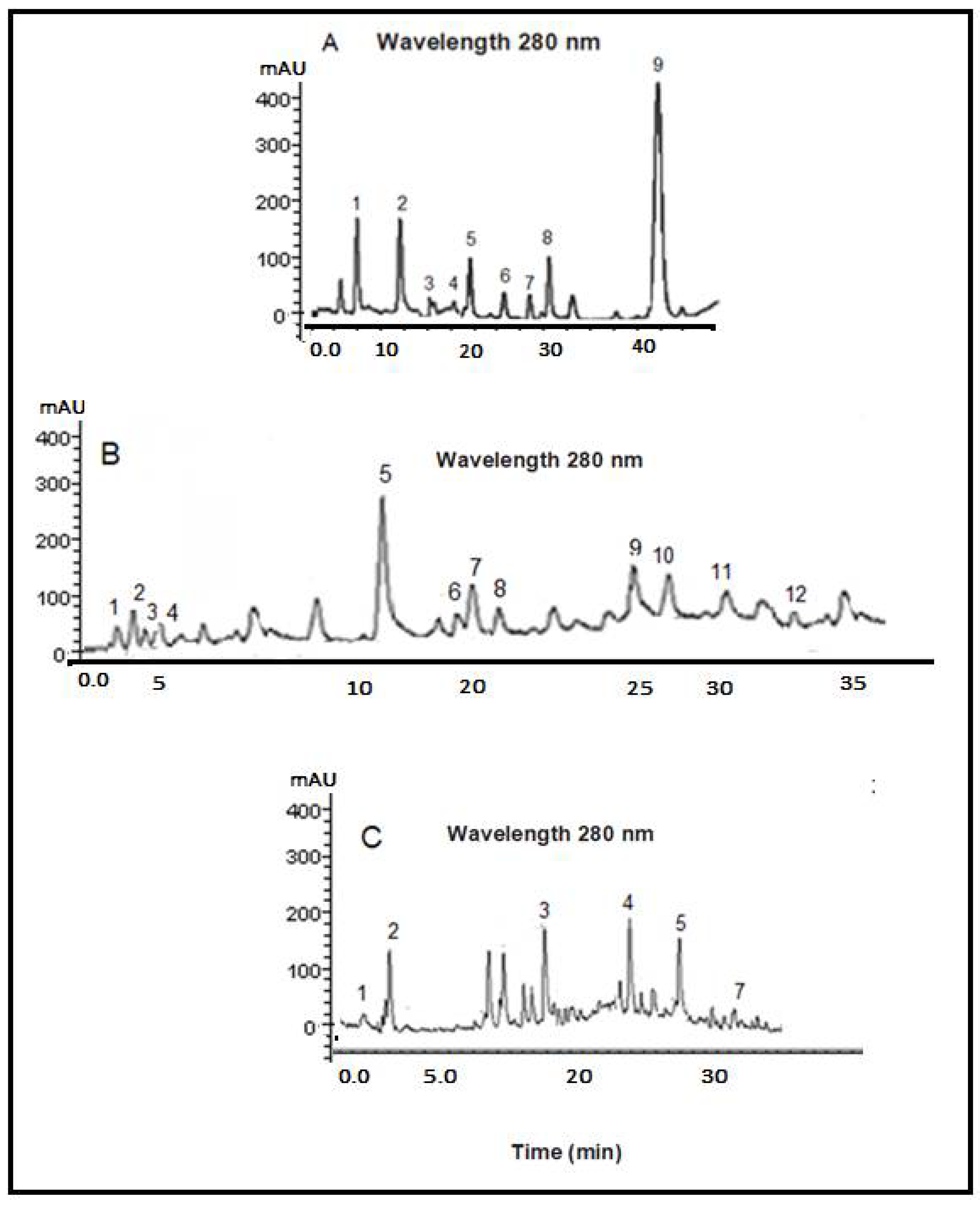

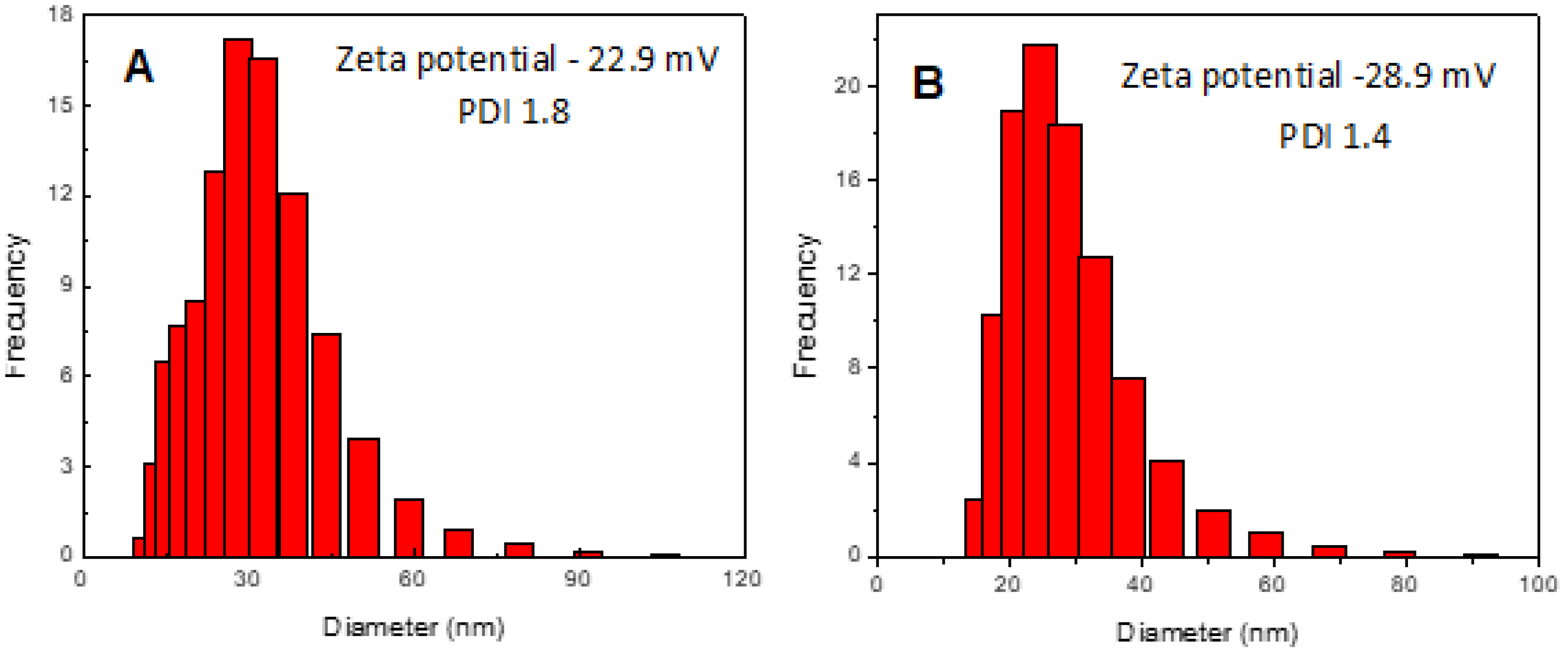

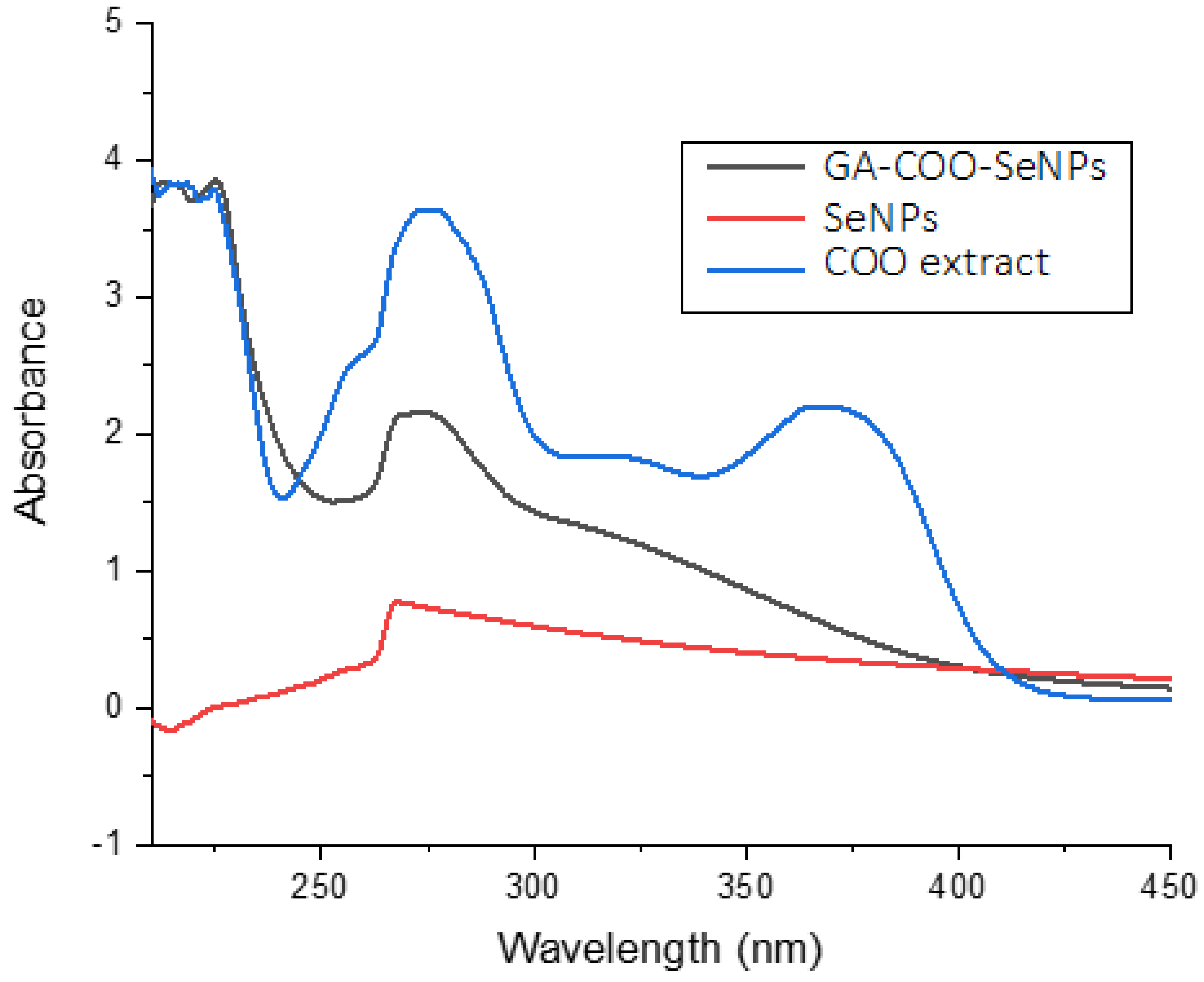

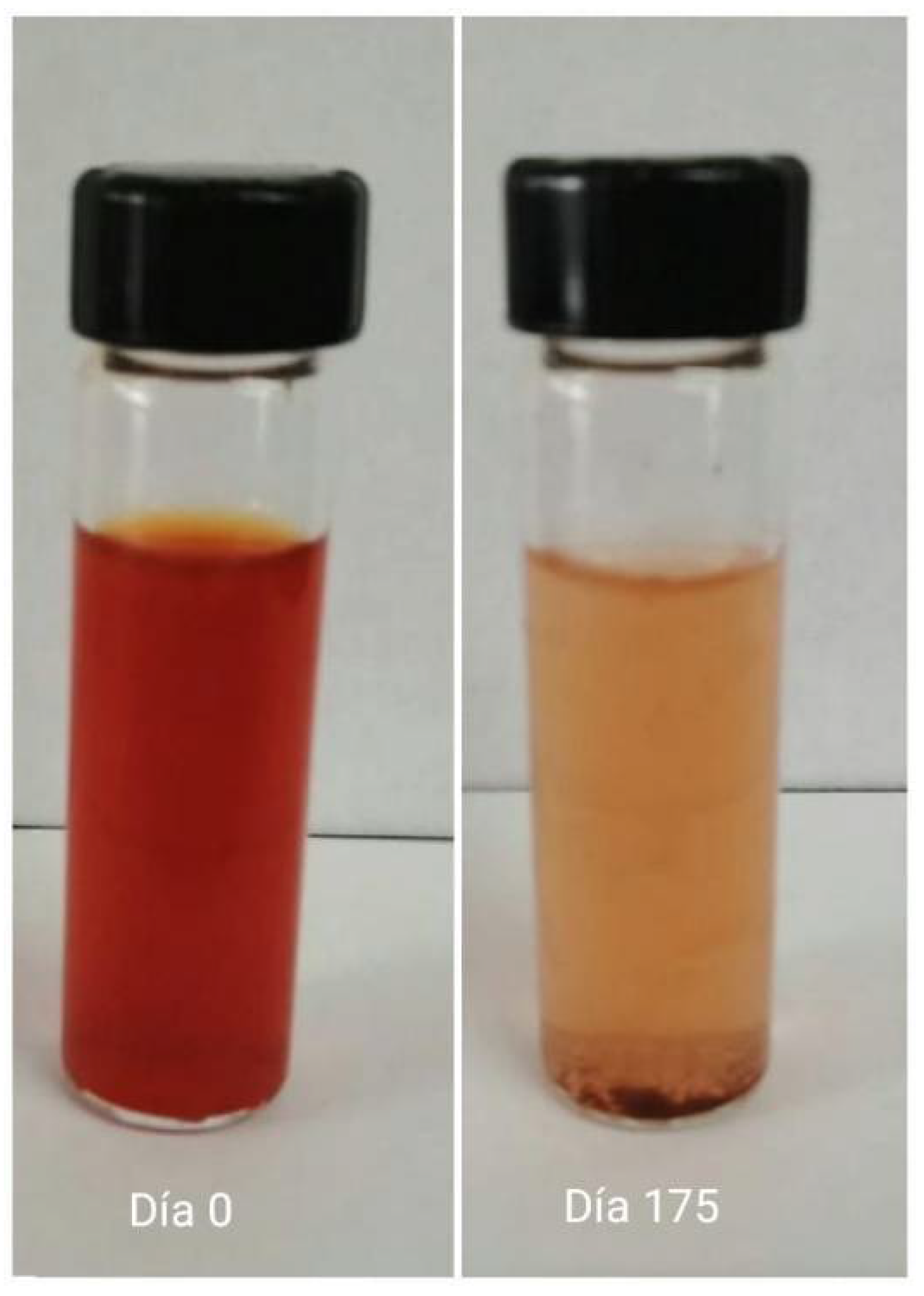
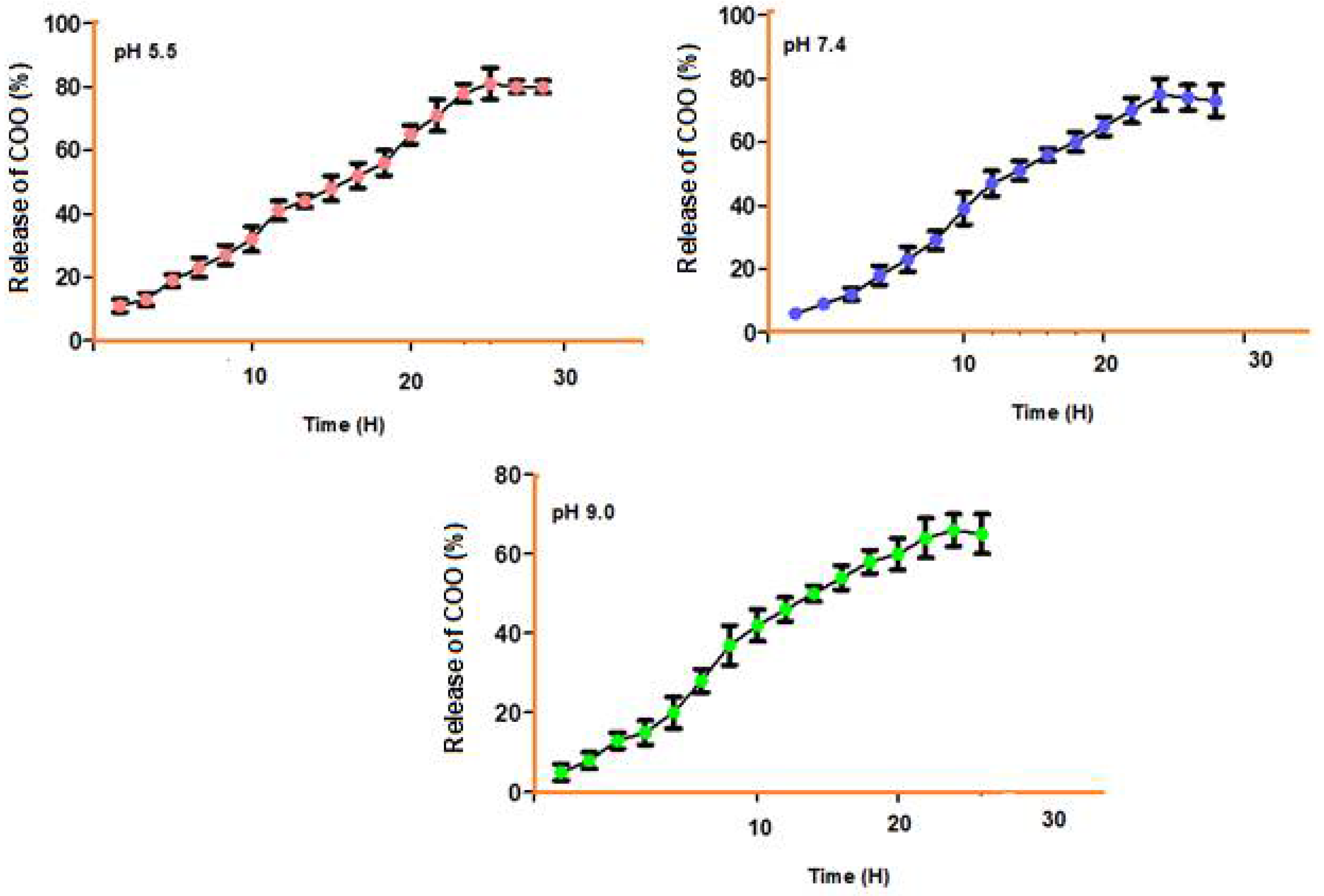

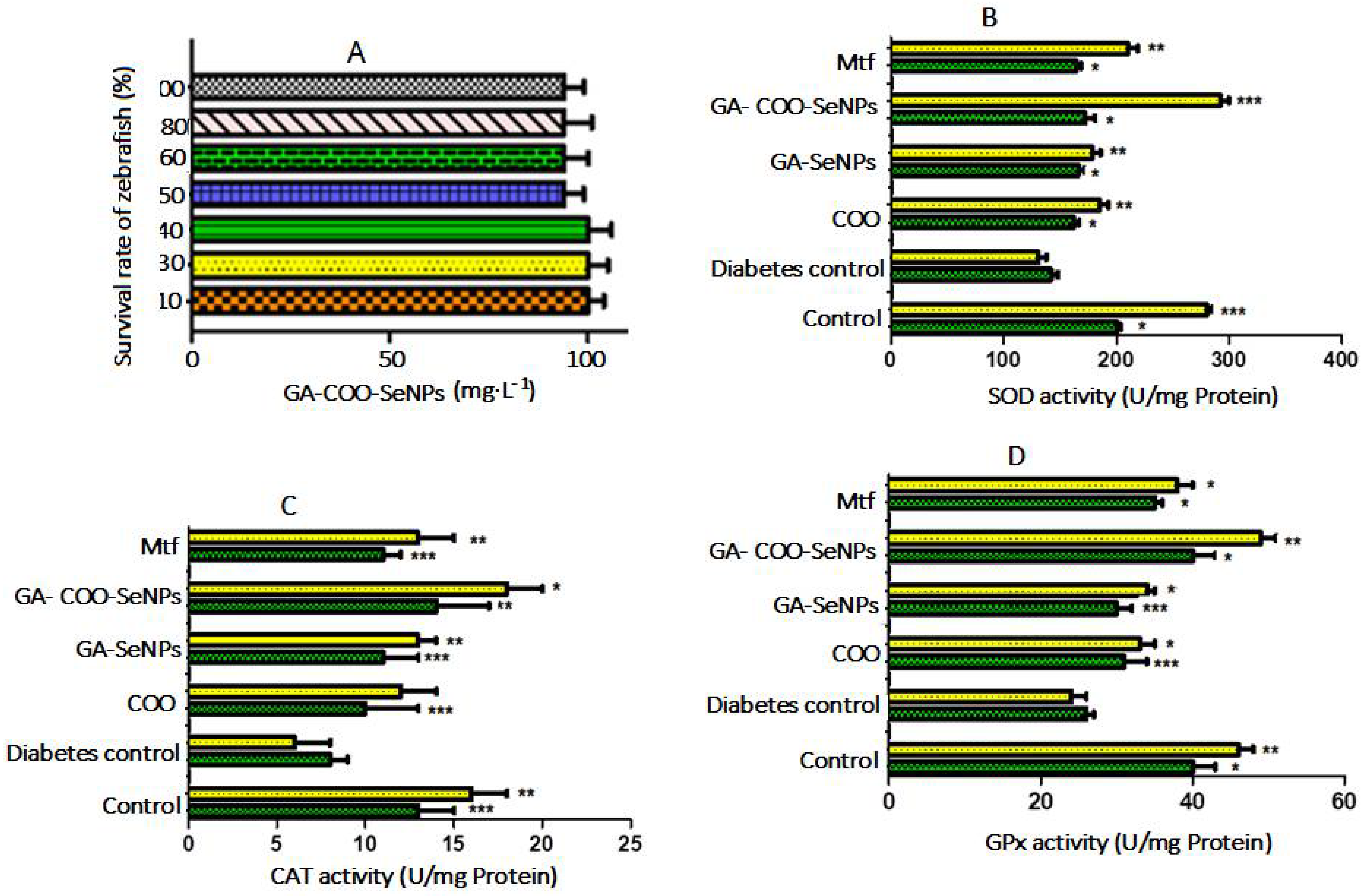
| Cinnamomum zeylanicum (Cinnamon Bark) | |||
|---|---|---|---|
| Total Phenol Content 310.28 mg GAE 100 g−1 DW | |||
| Characterization | |||
| Compound | RT min | λmax (nm) | [M+H]+ m/z (ESI-MS: positive ion) |
| Caffeic acid | 26.4 | 210, 240, 325 | 181, 163, 145, 135 |
| Cinnamic acid | 13.7 | 203, 215, 273 | 147, 125, 109 |
| Cinnamaldehyde | 41.3 | 241, 300 | 133, 132, 104, 103, 77, 61 |
| Coumarin | 15.4 | 275, 312 | 146, 128, 90, 63 |
| p-Coumaric acid | 20.4 | 212, 283 | 165, 147, 133, 119, 91 |
| Eugenol | 30.2 | 280 | 164, 149, 137, 131, 121 |
| Protocatechuic acid | 7.6 | 242, 294 | 154, 138, 109, 81 |
| Rosmarinic acid | 28.5 | 221, 291, 332 | 360, 319, 315, 193, 181, 175, 165 |
| Vanillic acid | 17.6 | 259, 252 | 312, 297, 282, 223, 193, 166, 151, 125, 107 |
| Origanum majorana | |||
| Total Phenol Content 90.42 mg GAE 100 g−1 DW | |||
| Characterization | |||
| Compound | RT min | λmax (nm) | [M+H]+ m/z (ESI-MS: positive ion) |
| Caffeic acid | 26.4 | 210, 240, 325 | 181, 163, 145, 135 |
| Carnosic acid | 19 | 338 | 332, 330, 299, 281, 247, 229, 149 |
| Chlorogenic acid | 3.3 | 219, 241, 331 | 353, 191, 161 |
| Cinnamic acid | 13.7 | 203, 215, 273 | 147, 125, 109 |
| p-Coumaric acid | 20.4 | 212, 283 | 165, 147, 133, 119, 91 |
| Eugenol | 30.2 | 280 | 164, 149, 137, 131, 121 |
| Ferulic acid | 33.5 | 235,322 | 193, 177, 148, 133 |
| Gallic acid | 3.9 | 209, 266 | 170, 169, 153, 125 |
| Resorcinol | 5.4 | 273 | 111, 110, 81, 69, 64, 55 |
| Pyrogallol | 4.6 | 208, 266 | 126, 108, 97, 80, |
| Rosmarinic acid | 28.5 | 221, 291, 332 | 360, 319, 315, 193, 181, 175, 165 |
| Syringic acid | 19.2 | 275 | 198, 183, 127 |
| Origanum vulgare ssp. vulgare | |||
| Total Phenol Content 126.74 mg GAE 100 g−1 DW | |||
| Characterization | |||
| Compound | RT min | λmax (nm) | [M+H]+ m/z (ESI-MS: positive ion) |
| Chicoric acid | 18 | 311, 299, 179, 149, 135 | |
| Chlorogenic acid | 3.3 | 219, 241, 331 | 353, 191, 161 |
| Ferulic acid | 33.5 | 235,322 | 193, 177, 148, 133 |
| Gentisic acid | 3.9 | 241, 324 | 154, 136, 108, 80 |
| Rosmarinic acid | 28.5 | 221, 291, 332 | 360, 319, 315, 193, 181, 175, 165 |
| Salvianolic acid B | 23.6 | 260, 330 | 718, 519, 321 |
| Treatment Blood Glucose mg/dL Cholesterol mg/dL Triglycerides mg/dL | |||
|---|---|---|---|
| Normal group | 61 ± 3.43 c | 99 ± 5.44 b | 71 ± 3.24 c |
| Diabetic group | 186 ± 5.21 | 285 ± 7.32 | 172 ± 4.62 |
| COO (10 µg/L) | 102 ± 4.77 a | 171 ± 6.08 c | 124 ± 1.68 b |
| COO (20 µg/L) | 83 ± 6.31 b | 159 ± 4.21 a | 101 ± 4.32 a |
| GA-SeNPs (10 µg/L) | 116 ± 4.32 a | 163 ± 3.86 c | 118 ± 2.58 a |
| GA-SeNPs (20 µg/L) | 99 ± 2.87 b | 151 ± 2.91 a | 100 ± 1.44 a |
| GA-COO-SeNPs (10 µg/L) | 69 ± 3.19 c | 107 ± 4.28 b | 80 ± 3.22 c |
| GA-COO-SeNPs (20 µg/L) | 54 ± 4.61 c | 97 ± 2.31 b | 75 ± 1.78 c |
| Metformin (25 mM) | 67 ± 2.39 c | 100 ± 3.32 b | 73 ± 2.99 c |
Publisher’s Note: MDPI stays neutral with regard to jurisdictional claims in published maps and institutional affiliations. |
© 2022 by the authors. Licensee MDPI, Basel, Switzerland. This article is an open access article distributed under the terms and conditions of the Creative Commons Attribution (CC BY) license (https://creativecommons.org/licenses/by/4.0/).
Share and Cite
Pérez Gutiérrez, R.M.; Soto Contreras, J.G.; Martínez Jerónimo, F.F.; de la Luz Corea Téllez, M.; Borja-Urby, R. Assessing the Ameliorative Effect of Selenium Cinnamomum verum, Origanum majorana, and Origanum vulgare Nanoparticles in Diabetic Zebrafish (Danio rerio). Plants 2022, 11, 893. https://doi.org/10.3390/plants11070893
Pérez Gutiérrez RM, Soto Contreras JG, Martínez Jerónimo FF, de la Luz Corea Téllez M, Borja-Urby R. Assessing the Ameliorative Effect of Selenium Cinnamomum verum, Origanum majorana, and Origanum vulgare Nanoparticles in Diabetic Zebrafish (Danio rerio). Plants. 2022; 11(7):893. https://doi.org/10.3390/plants11070893
Chicago/Turabian StylePérez Gutiérrez, Rosa Martha, José Guadalupe Soto Contreras, Felipe Fernando Martínez Jerónimo, Mónica de la Luz Corea Téllez, and Raúl Borja-Urby. 2022. "Assessing the Ameliorative Effect of Selenium Cinnamomum verum, Origanum majorana, and Origanum vulgare Nanoparticles in Diabetic Zebrafish (Danio rerio)" Plants 11, no. 7: 893. https://doi.org/10.3390/plants11070893
APA StylePérez Gutiérrez, R. M., Soto Contreras, J. G., Martínez Jerónimo, F. F., de la Luz Corea Téllez, M., & Borja-Urby, R. (2022). Assessing the Ameliorative Effect of Selenium Cinnamomum verum, Origanum majorana, and Origanum vulgare Nanoparticles in Diabetic Zebrafish (Danio rerio). Plants, 11(7), 893. https://doi.org/10.3390/plants11070893







